Footwear Manufacturing Process: A Step-by-Step Guide

Author: Andy Hong | Founder at XDS
Hi, I'm Andy Hong, here to share my expertise in footwear manufacturing with you.
Footwear Manufacturing Process: A Step-by-Step Guide
Table of Contents
Have you ever wondered how footwear evolves from an idea to a finished product ready for the shelves? This process combines creativity and craftsmanship to deliver shoes that meet industry standards.
As a footwear production specialist, I understand the intricate details that drive this process. My expertise lies in bridging design concepts with efficient production techniques.
The footwear manufacturing process involves several stages, from initial design to quality control and distribution. Each step contributes to creating shoes that balance functionality and visual appeal.
In this guide, you will learn about the step-by-step process of crafting footwear. We will highlight each key stage and their significance to the process.
Quick Process Summary
Understanding the footwear manufacturing process is crucial for businesses to optimize efficiency and maintain quality. This quick summary provides a step-by-step overview to help visualize the key stages involved in creating a pair of shoes.
| Step | Name | Description |
| Step#1 | Concept and Design | Transforming ideas into detailed designs that balance style, functionality, and manufacturing feasibility. |
| Step#2 | Pattern Making | Creating templates that define the size and shape of each shoe component, ensuring accuracy and consistency. |
| Step#3 | Cutting the Materials | Using patterns to cut raw materials like leather and fabric into precise components for assembly. |
| Step#4 | Stitching and Assembling | Stitching cut pieces together to form the upper, adding linings, reinforcements, and decorative details. |
| Step#5 | Lasting Process | Shaping the upper around a shoe last to create the shoe’s structure, fit, and design symmetry. |
| Step#6 | Attaching the Sole | Joining the sole to the upper using adhesives, stitching, or molding techniques to create a durable foundation. |
| Step#7 | Finishing Process | Refining the shoe with polishing, trimming, protective coatings, and branding to make it visually and functionally complete. |
| Step#8 | Quality Control | Inspecting the shoe for defects, durability, and consistency in size, design, and functionality. |
| Step#9 | Packaging and Distribution | Preparing the shoe for delivery with protective packaging and clear labeling, followed by efficient logistics management. |
Each stage in this process plays a vital role in delivering shoes that meet customer expectations and industry standards. A structured approach helps businesses produce high-quality footwear while optimizing resources.
Step#1 Concept and Design
The process begins with turning creative ideas into functional and visually appealing designs. This stage focuses on aligning the design with market trends, customer preferences, and manufacturing capabilities.
- Market Research: Analyze current trends and customer needs to inform design decisions. This helps create products that resonate with the target audience.
- Design Collaboration: Work closely with designers and production teams to develop initial concepts. This makes sure that the designs are both attractive and feasible for manufacturing.
- Blueprint Creation: Use CAD software to refine designs and create precise blueprints. These digital plans serve as a foundation for the next stages.
- Final Review: Evaluate the designs to confirm they balance aesthetics, functionality, and scalability. This step minimizes potential production challenges.
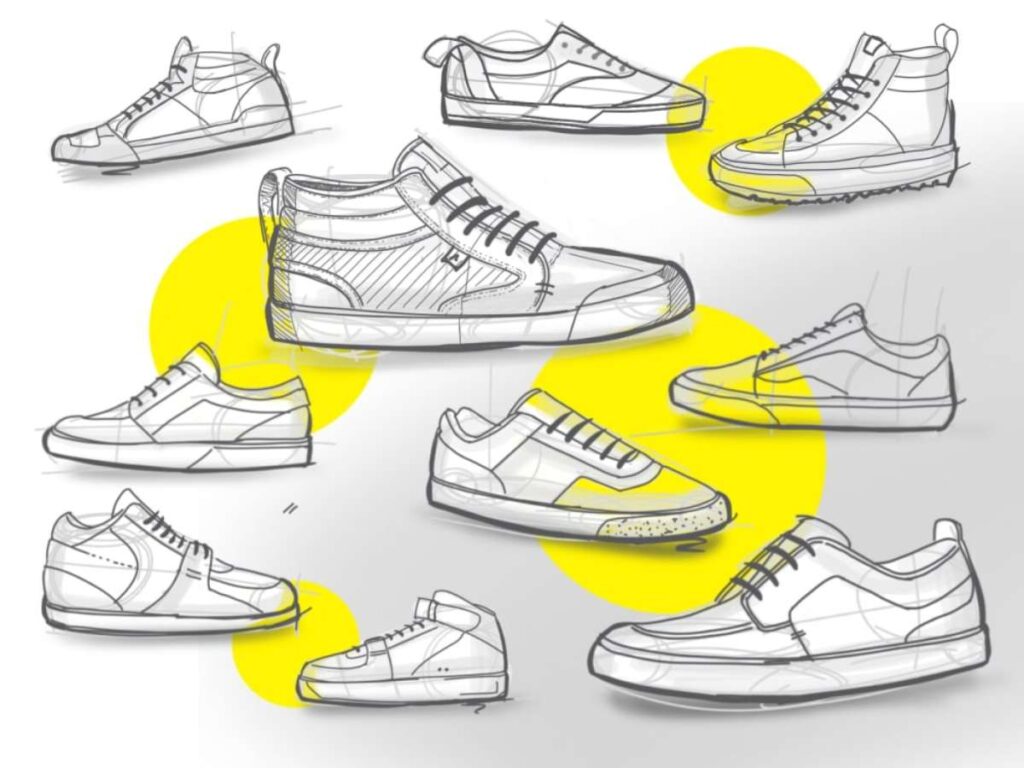
Step#2 Pattern Making
Pattern making translates the design into precise templates for each shoe component. These patterns guide the cutting and assembly processes, establishing consistency and accuracy.
- Template Development: Create templates that define the size and shape of each shoe part. These templates can be drawn manually or created digitally using CAD software.
- Material Fit Testing: Test the patterns on selected materials to confirm compatibility. Adjustments are made to improve the accuracy and alignment of components.
- Standardization: Finalize and store patterns for consistent replication. These serve as a reference for future production batches.
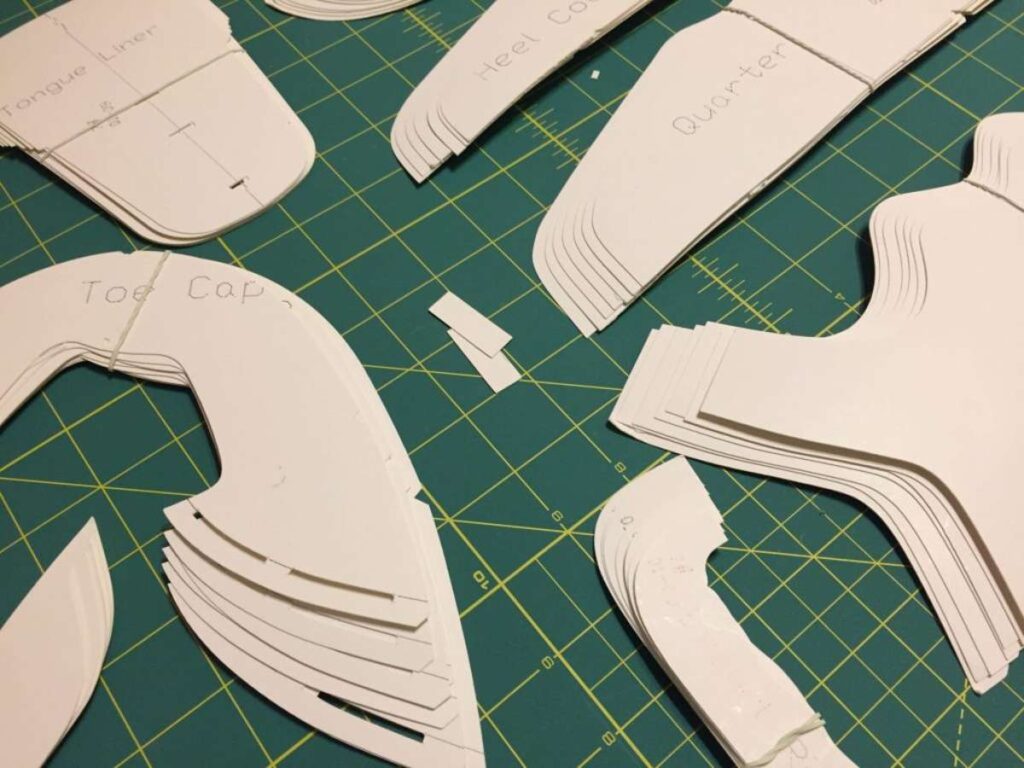
Step#3 Cutting the Materials
In this step, raw materials are transformed into individual components following the patterns. Precision in cutting is essential for minimizing waste and providing proper assembly later.
- Material Selection: Choose materials like leather, fabric, or foam based on the design’s requirements. For instance, consider factors like durability, texture, and flexibility for the intended shoe type.
- Cutting Techniques: Use manual cutting for small batches or intricate designs, while machine cutting is ideal for large-scale operations. Both methods prioritize precision and efficiency.
Step#4 Stitching and Assembling the Upper
The upper is the most visible and functional part of the shoe, created by stitching various components together. This step integrates craftsmanship and technology to produce durable and appealing results.
- Component Assembly: Stitch individual pieces together to form the upper’s framework. Strong stitching is critical for both durability and aesthetics.
- Lining and Padding: Add interior linings and padding for improved comfort and fit. These features enhance the user experience, especially for prolonged wear.
- Decorative Details: Incorporate branding elements like logos, overlays, and stitching patterns. These details add visual appeal and differentiate the product.
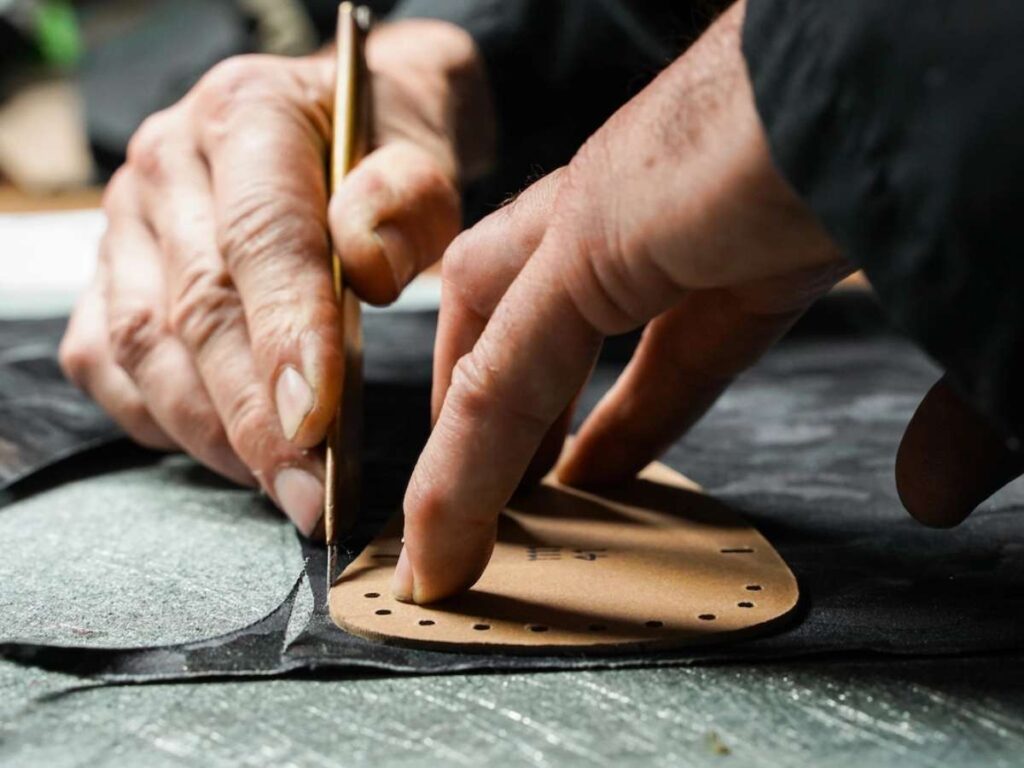
Step#5 Lasting Process
Lasting gives the shoe its shape by molding the upper around a foot-shaped form called a shoe last. This step defines the shoe’s fit, structure, and overall appearance.
- Shaping the Upper: Stretch the upper over the last to eliminate wrinkles and achieve a smooth finish. At XDS Shoes, this process is carefully executed to give the shoe its precise final form.
- Material Securing: Use adhesives, tacks, or nails to keep the upper in place. This creates a snug fit and makes sure the shoe retains its structure.
- Alignment Check: Verify the symmetry and alignment of the shoe on the last. Proper alignment provides comfort, balance, and visual appeal.
Step#6 Attaching the Sole
The sole forms the foundation of the shoe, providing support, durability, and functionality. This step involves attaching the sole to the upper using techniques such as adhesive bonding, stitching, or molding.
- Bonding Process: Use adhesives, stitching, or molding techniques to join the sole to the upper. The method depends on the shoe’s purpose and design.
- Feature Integration: Add functional elements like treads, cushioning, or grooves. These features enhance the shoe’s performance for specific activities.
- Durability Testing: Assess the bond’s strength and the sole’s alignment. Proper testing reduces risks of separation or misalignment.
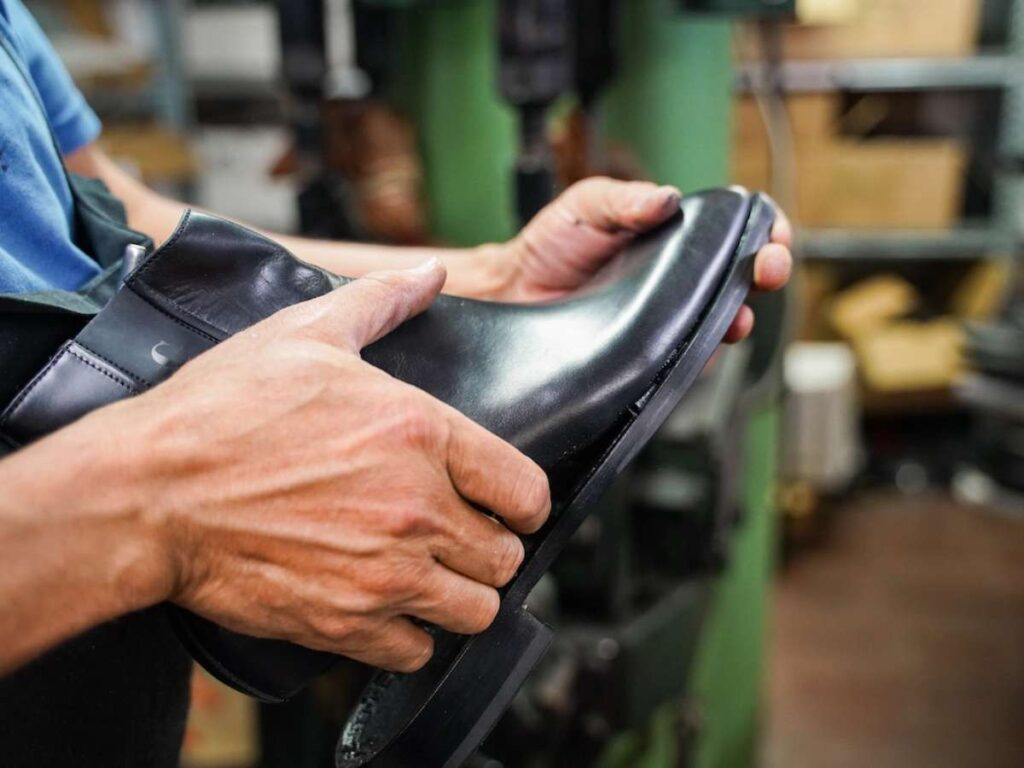
Step#7 Finishing Process
Finishing is where the shoe gets its polished appearance and final touches. This stage prepares the product for the market by refining its aesthetics and functionality.
- Surface Polishing: Apply treatments to smooth the surface and enhance the shoe’s visual appeal. Polishing also helps protect the material from wear and tear.
- Trimming and Cleaning: Remove excess threads or materials for a neat finish. This step improves both functionality and presentation.
- Branding and Details: Add logos, tags, and other branding elements. These details distinguish the shoe and reinforce brand identity.
- Protective Coatings: Apply waterproof or stain-resistant coatings for added durability. At XDS Shoes, these treatments are meticulously applied to enhance the shoe’s lifespan across various conditions.
Step#8 Quality Control and Inspection
Quality control guarantees the final product meets industry standards and customer expectations. Each pair undergoes detailed inspections and performance testing.
- Defect Detection: Inspect stitching, material quality, and sole attachment for defects. Address any issues before the shoes move to the next stage.
- Functional Testing: Test the shoe’s flexibility, comfort, and durability. This guarantees the product performs well under intended conditions.
- Fit Assessment: Check the shoe’s size and shape against standardized measurements. For instance, verifying the fit ensures the shoe provides the right comfort and reduces customer returns.
- Visual Consistency: Review the overall design and color for uniformity. This step makes sure that each pair matches brand standards.
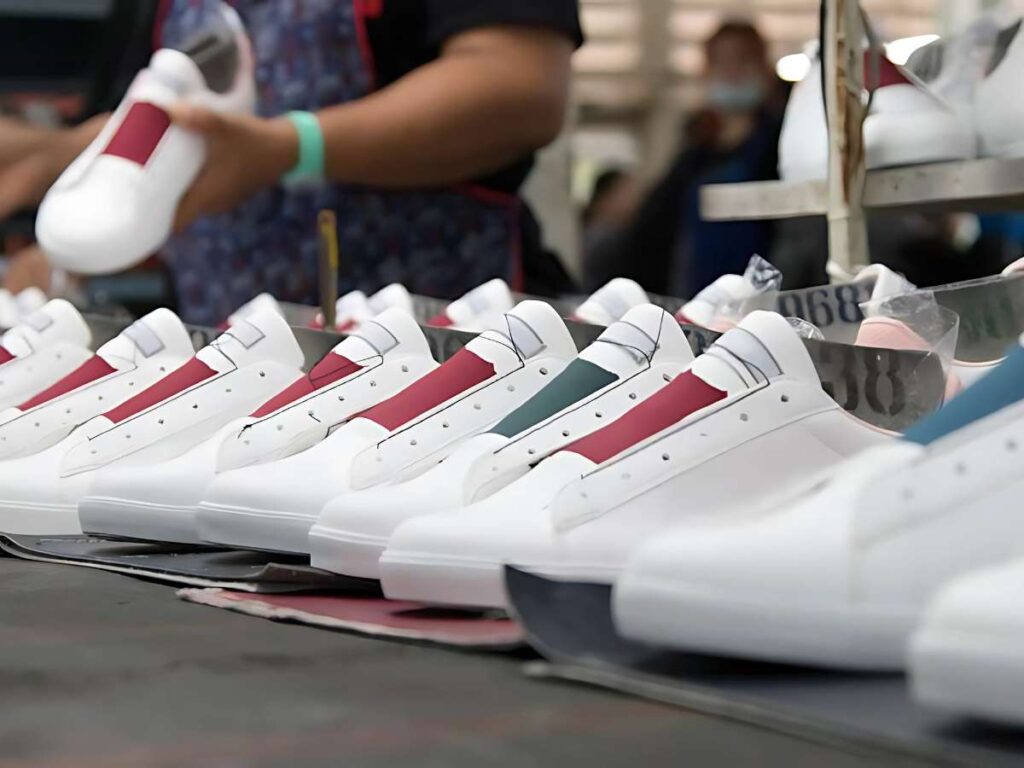
Step#9 Packaging and Distribution
The final step prepares the shoes for their journey to customers. Proper packaging and logistics guarantee that the product arrives in excellent condition and on time.
- Protective Packaging: Use sturdy boxes and fillers to safeguard the shoes during transit. Packaging should also reflect the brand’s identity and values.
- Eco-Friendly Options: Opt for sustainable materials to appeal to environmentally conscious consumers. This choice aligns with modern sustainability goals.
- Clear Labeling: Add size, style, and branding details to the packaging for easy identification. Accurate labeling helps retailers and customers find the right products.
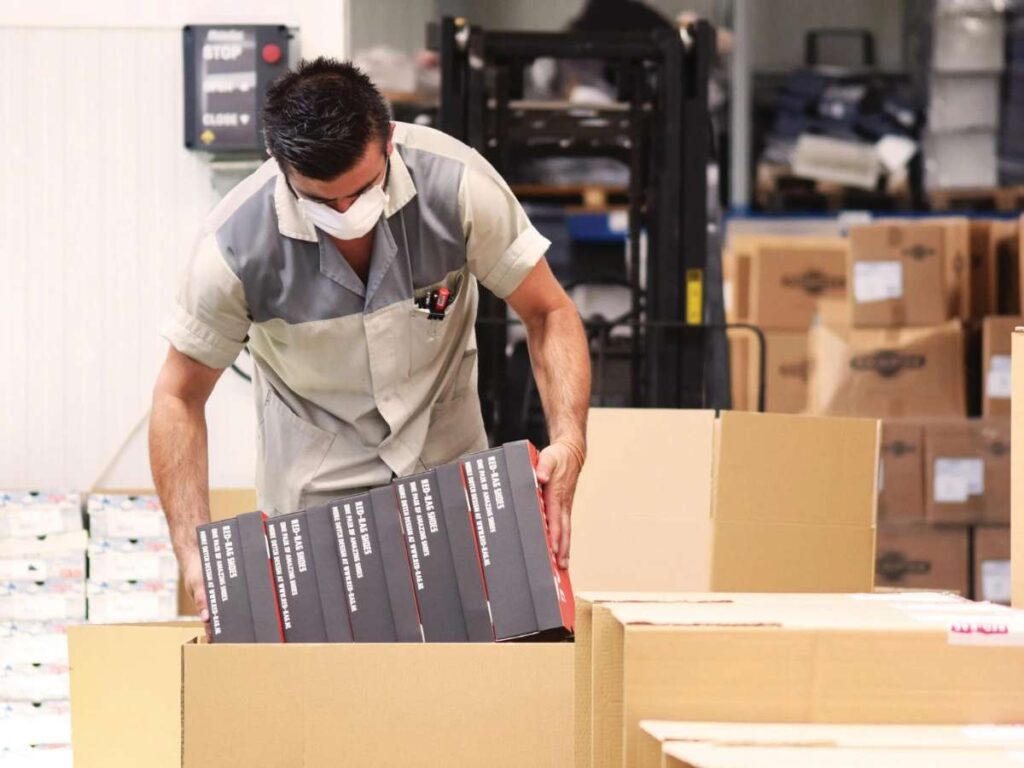
Conclusion
The footwear manufacturing process is a carefully orchestrated series of steps that transform creative concepts into functional and stylish products. Each stage plays a critical role in making sure the final product meets both aesthetic and practical demands. A solid understanding of these steps not only enhances production efficiency but also positions manufacturers to adapt to evolving market trends and customer needs.
We hope this guide has provided valuable insights into the complexities and nuances of footwear production. At XDS, we specialize in supporting businesses in optimizing their manufacturing processes. Whether you’re starting a new footwear line or refining existing workflows, we are here to help you navigate the challenges and opportunities in the industry. Contact us today to bring your designs to life with precision and quality.
Discover More Options
We’ve gathered a few more articles that could help you out. Check them out for more great advice:
Shoe Industry & Brands:
- How to Manufacture a Shoe: Step by Step Guide
- List of Best Shoe Manufacturers
- Top 7 Shoe Manufacturers in China
Sourcing & Manufacturing Guides:
- How to Import Shoes From China?
- How to Find a Shoe Manufacturer?
- Top 9 Expanding TPU Sole Shoes Manufacturers
- Where Is Nike Manufactured?
Still haven’t found what you’re looking for? Don’t hesitate to contact us; we’re available around the clock to assist you.
Quick Quote
Fill out the form, get the quote in hours!





